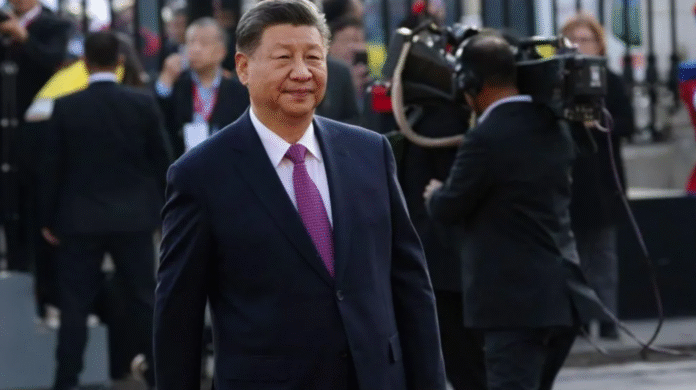Evergrande Crisis Explained: Why the Chinese Property Giant Matters
The Evergrande crisis explained is more than just a story of one company’s downfall, it is a reflection of China’s shifting economic priorities and its ripple effects on global markets. Once celebrated as the country’s largest real estate developer, Evergrande has now become a cautionary tale of over-expansion, debt dependency, and changing government policies.
In this article, we break down everything you need to know about Evergrande’s collapse, why it matters to China and the world, and what lessons can be learned from its downfall.
What Is Evergrande?
Founded in 1996 by Hui Ka Yan, Evergrande originally the Hengda Group, quickly grew into one of China’s biggest property developers. With more than 1,300 projects across 280 cities, it wasn’t just a real estate empire.
The Evergrande Group expanded aggressively into:
- Wealth management
- Electric vehicle production
- Theme parks and leisure businesses
- Even owning Guangzhou FC, one of China’s most successful football clubs
At its peak, Hui Ka Yan was Asia’s richest man, worth more than $42 billion. But today, his empire has crumbled, and his fortune has nearly disappeared.

Why Did the Evergrande Crisis Begin?
The Evergrande crisis explained starts with its risky borrowing. The company accumulated over $300 billion in debt to fuel its massive growth.
Things began to unravel in 2020 when Beijing introduced new financial restrictions, known as the “three red lines policy” designed to control risky debt in the real estate sector.
With stricter rules, Evergrande was forced to sell properties at heavy discounts to generate cash. This left the company struggling to meet debt repayments and interest obligations.
By 2021, Evergrande officially defaulted on a major debt repayment, triggering global concerns about financial contagion.
The Downfall of Evergrande Shares
Evergrande’s stock value has collapsed by more than 99%, wiping out billions in shareholder wealth.
-
In January 2024, Hong Kong’s High Court ordered Evergrande to be wound up.
-
In March 2024, founder Hui Ka Yan was fined $6.5 million and banned from China’s capital markets for life.
-
By August 2023, Evergrande had already filed for bankruptcy protection in New York to safeguard its U.S. assets.
For many ordinary Chinese families who invested their life savings in Evergrande properties, the fallout has been devastating.
Why Does the Evergrande Crisis Matter Globally?
The Evergrande crisis explained goes far beyond one company. China’s property sector once contributed about 30% of the nation’s GDP. That means Evergrande’s collapse has shaken confidence in the broader economy.
Key consequences include:
- Local governments losing revenue from land sales and property taxes
- Declining investments in construction and allied industries
- Job losses across the real estate supply chain
- Ordinary households seeing their wealth eroded
According to Bloomberg, the Evergrande collapse represents one of the largest corporate debt crises in history.

Why Didn’t Beijing Bail Out Evergrande?
Unlike the 2008 U.S. financial crisis, Beijing chose not to directly bail out Evergrande. Instead, the Chinese government provided:
-
Low-interest loans to banks handling struggling real estate projects
-
Incentives for homebuyers to stabilize demand
-
Support for appliance and household purchases to encourage spending
The refusal to rescue Evergrande directly was intentional. The government wanted to avoid creating “moral hazard”, where companies take excessive risks expecting bailouts.
Instead, Beijing’s new focus is on high-tech industries like artificial intelligence, renewable energy, electric vehicles, and robotics, part of President Xi Jinping’s long-term economic strategy.
Impact on Ordinary Chinese Families
Perhaps the biggest victims of the Evergrande crisis explained are ordinary citizens. In China, property has traditionally been seen as the safest investment. Families poured their life savings into Evergrande apartments—many of which remain unfinished.
This crisis has left thousands of homebuyers stuck paying mortgages on properties that may never be completed. The resulting anger and protests show just how deep the trust deficit has become between citizens and property developers.
Lessons From the Evergrande Collapse
The fall of Evergrande holds critical lessons:
-
Over-leverage is risky – borrowing massive amounts without sustainable repayment plans leads to collapse.
-
Government policy matters – shifts in Beijing’s strategy can change the fate of entire industries overnight.
-
Diversification doesn’t guarantee safety – even with ventures in cars, sports, and finance, Evergrande couldn’t escape its property debt trap.
-
Consumer trust is fragile – once lost, it’s difficult to rebuild.
Conclusion
The Evergrande crisis explained shows that no company, no matter how powerful, is immune to financial collapse. It also signals the end of China’s property-driven growth model and the beginning of a new era focused on technology and innovation.
For global markets, Evergrande’s downfall is a stark reminder of how interconnected economies are, and how corporate mismanagement in one country can create ripples worldwide.

